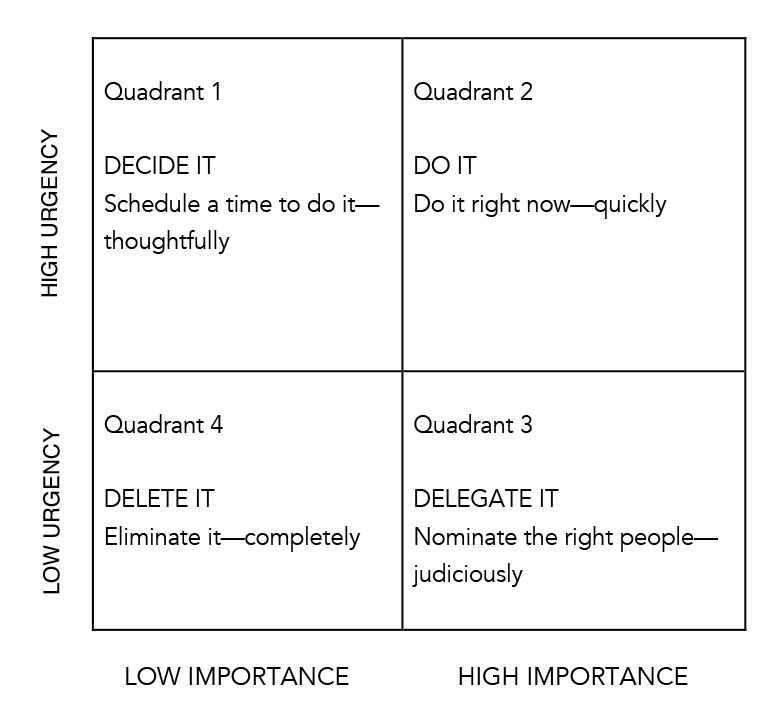5 minutes
Use these tools to help assess and improve your ability to lead proactively and strategically.
With the world becoming increasingly aware of the concept of climate change, it’s important to spend a few moments considering how this same principle of slow, continuous change applies to leadership.
Are you the kind of leader who is more interested in the weather, or are you the kind of leader who is most interested in the climate?
Consider the difference:
“The weather is the weather today and tomorrow. Is it raining now? Will it be sunny tomorrow? What shall I wear this afternoon?” That’s the weather.
The climate, however, is much more interesting and much more important to a leader. The climate is the weather over time, and when it comes to organizational climate, it takes an enormous amount of wit and skill to manage.
Tactics Versus Strategy
Tactical leaders almost exclusively occupy themselves with the study of the weather. What’s happening today? How are we set up to deal with what’s happening today? Are we all safe at the moment? Are we having a good month? Did we hit our monthly target?
The problem with this approach is that subtle changes over time can significantly alter the competitive landscape to the extent that, eventually, their business and offerings becomes irrelevant.
Strategic leaders should be more interested in understanding the climate. How are they set up for the weather next year, three years down the road, five years down the road? Thirty years down the road?
As a leader, your job it to future-proof yourself, your people, and your business.
Don’t React—Anticipate
Wayne Gretzky, of hockey fame, once said that the reason he was such an outstanding player is because he skated to where the puck will be, not where it is, nor where it has been. The reason he was so adept at this was because he was a student of the game, and he realized that his job was to anticipate, not to react to events as they were unfolding. Great leaders do the same—they respond with intention; they don’t react with urgency.
In your business it can be described this way:
Weather—What’s happening right now, today, tomorrow, next week, next month? What does the P&L sheet look like? What does the sales forecast look like for Q2? What does the cash flow forecast show for next month?
Climate—Our core values and vision statements. Our mission. Our mid- and long-term strategy. Our recruitment policy. Our leadership-development program.
Make Strategy a Priority
Stephen R. Covey, author of The 7 Habits of Highly Effective People, reminds us that we shouldn’t figure out how to prioritize what’s on our schedule; rather, we should figure out how to schedule our priorities.
Most leaders (well, the unenlightened ones, at least) tend to spend their lives in a stressful and thoroughly horrid box: Quadrant 2 of the Eisenhower Decision Matrix below—ugh.
If you live in Quadrant 2, you’re simply not doing a good job of allocating resources to better resolve conflicts. You’re not doing a good job of managing yourself, your time and your business. You are not being an effective leader—you’re dealing in weather-based issues.
You should make a priority to figure out how to live in Quadrant 1 as much as possible, doing really important but not urgent stuff at a thoughtful and efficient pace. That’s handling the climate.

Give yourself a rating for your strategic leadership skill and competency from one to 10 over, say, the last six to nine weeks.
1 = Truly, truly terrible. Embarrassing, really.
10 = As close to leadership perfection as is humanly possible. They’ll be building me a statue soon, I’m pretty sure.
Hint: It’s absolutely not a “10,” I’m afraid.
If it isn’t a 10 (and it definitely isn’t), it means there are some gaps.
But where are the gaps? How serious are the gaps? How long have the gaps been there? What caused the gaps, and how can you close them? Will the gaps seriously limit you, your people, and your business?
Take a Leadership Assessment
Some assessments measure personality types, while others measure communications styles, and others are designed to measure strengths, aptitudes, attitudes and so on.
The My Daily Leadership assessment is specifically designed to measure your ability against the most critical 20 leadership building blocks as well as identify your leadership blind spots.
Whichever assessment you choose, it is incumbent upon you to pay very close attention to the results and resolve to make some fundamental changes—otherwise, well, why even bother taking the benchmark exercise in the first place, right?
To intentionally adulterate and misappropriate the genius of Tom Landry of Dallas Cowboys fame:
“A leadership assessment is something that tells you what you don’t want to hear, which has you see what you don’t want to see, so you can be who you always knew you could be.”
Your leadership assessment is the answer to the big question, “Am I thinking too much about the weather and not spending enough time dealing with the climate?”
Grab your umbrella.
Antonio Garrido, author of MY DAILY LEADERSHIP: A Powerful Roadmap for Leadership Success, has over twenty-five years in senior leadership positions with world-class businesses. He is an expert in leadership transformation: shaping high-performance leaders out of highly stressed and overworked leaders. He is a serial entrepreneur, successful business coach, author and charismatic speaker and works with leaders from small private businesses, right up to Fortune-60 size.
For more information visit www.mydailyleadership.com






